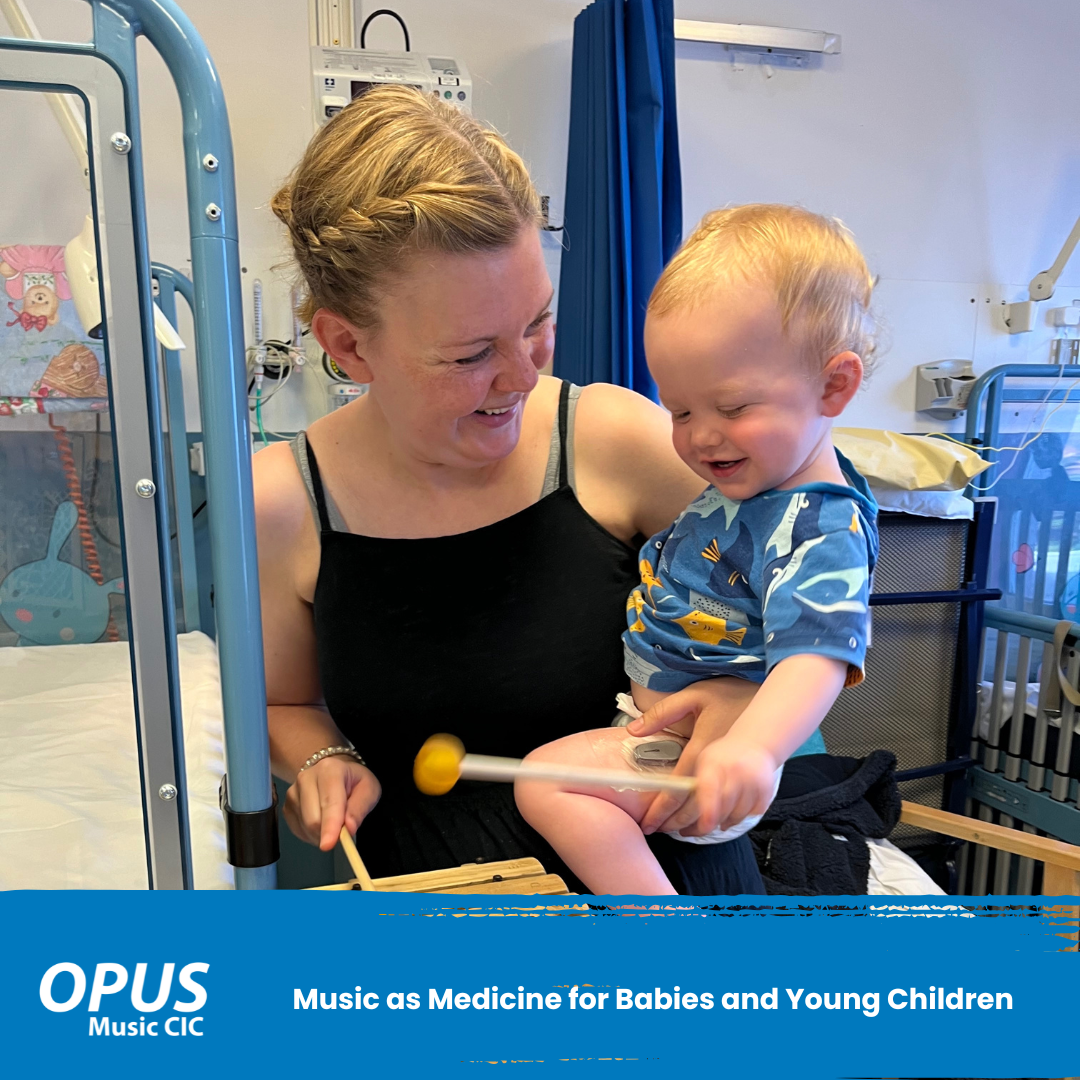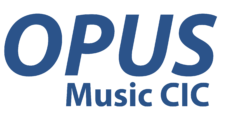Music as Medicine for Babies and Young Children
Music as Medicine for Babies and Young Children in Hospital

A Look at the Science
Music as Medicine: The Research
When a child is admitted to hospital, it can be a time of deep stress and uncertainty, for the young patient, their family, and even the clinical staff around them. At OPUS Music CIC, we’ve long believed in the power of live music to support health and well-being, especially in the hospital environment. But belief alone is not enough, we also turn to science to back our work. Increasingly, medical research supports what we see every day: music can have measurable, beneficial effects on babies and young children in hospital, helping to reduce stress, ease pain, improve physiological stability, and support family bonding.
Music Supports Physical Recovery in Neonates
Studies have shown that music can positively impact premature infants in neonatal intensive care units (NICUs). A landmark study published in Pediatrics demonstrated that live music interventions, such as lullabies sung by parents or musicians, can help regulate infants’ heart rate, improve feeding behaviour, and support better sleep patterns Loewy et al., 2013. These physiological changes can support faster recovery and reduce the need for medical interventions.
As one Neonatal Intensive Care Nurse at Royal Derby Hospital described after a session with OPUS musicians:
“The baby I was caring for during the music playing increased his oxygen saturations to 100% and so I could turn the oxygen he was receiving down by 3%. He looked so relaxed!”
Reducing Stress and Pain in Children
Music has been shown to reduce stress hormone levels (like cortisol) in hospitalised children, improving their ability to rest and recover. A systematic review in The Cochrane Library found that music interventions can significantly reduce pain and anxiety during medical procedures in children Bradt & Dileo, 2011. It helps create a soothing environment that supports emotional well-being alongside physical healing.
In the words of one young OPUS listener:
“It made me feel very happy – Aged 8”
Enhancing Diagnostic and Clinical Procedures
Music’s calming influence doesn’t just help the patient feel better; it also supports medical staff in carrying out essential tasks. For example, one cardiographer from University Hospitals Leicester told us:
“I was on the Neonatal Unit this afternoon to get an ECG from a baby. The baby was upset by hiccups which adversely affected the ECG trace. The musicians offered to play and, miraculously, after about 30 seconds of music, no exaggeration! The baby went to sleep and I was able to obtain a good quality result.”
These small but significant moments show how music can facilitate better clinical outcomes by lowering distress and increasing patient cooperation.
Supporting Families – Not Just Patients
Hospitalisation impacts the entire family, particularly when it involves young children or babies in critical care. Music can offer emotional support and moments of connection when words aren’t enough. Research in Frontiers in Psychology highlights how music-making in healthcare settings strengthens family bonds, reduces parental anxiety, and creates positive shared experiences Haslbeck & Bassler, 2018.
This was echoed by a parent who experienced live music from OPUS musicians while in hospital:
“Last week I had an amazing and unexpected experience. Whilst in the hospital extremely tired and emotionally drained, OPUS turned up with their music and gave me the strength I needed to carry on.”
Another parent shared a memory they will never forget:
“It was just the most beautiful moment, and will be a lovely memory we treasure forever. Holding my 24-week baby’s hand and listening to the gentle music. I cannot express how precious that was for us, thank you so much.”
Why It Matters Now More Than Ever
At OPUS Music CIC, we are committed to embedding music into healthcare not as entertainment, but as a vital part of care. Live music in hospitals is non-invasive, cost-effective, and evidence based. It uplifts, calms, and heals. From tiny premature babies to school-aged children and their families, the benefits are real and lasting.
If we can offer one moment of relief during a difficult day, or help lower oxygen support, or enable a successful ECG, we believe it’s worth every note.
Learn More
- Live Music Reduces Stress in Neonatal Intensive Care Units – Loewy et al., 2013
- Music Interventions for Mechanically Ventilated Patients – Bradt & Dileo, 2011 (Cochrane Review)
- Music Therapy with Preterm Infants and Their Parents – Haslbeck & Bassler, 2018
If you are interested in bringing live music into your healthcare setting, then please get in touch.
Let’s keep making music that matters.



 OPUS musicians have been involved in a year-long project, supporting the development of music and story-making for early years children and their families in library settings across Derbyshire. The project was hugely successful, with many libraries continuing to deliver practice beyond the project. The project was managed and supported by Derbyshire County Council with funding from Youth Music. The full evalution report has now been published.
OPUS musicians have been involved in a year-long project, supporting the development of music and story-making for early years children and their families in library settings across Derbyshire. The project was hugely successful, with many libraries continuing to deliver practice beyond the project. The project was managed and supported by Derbyshire County Council with funding from Youth Music. The full evalution report has now been published. 



